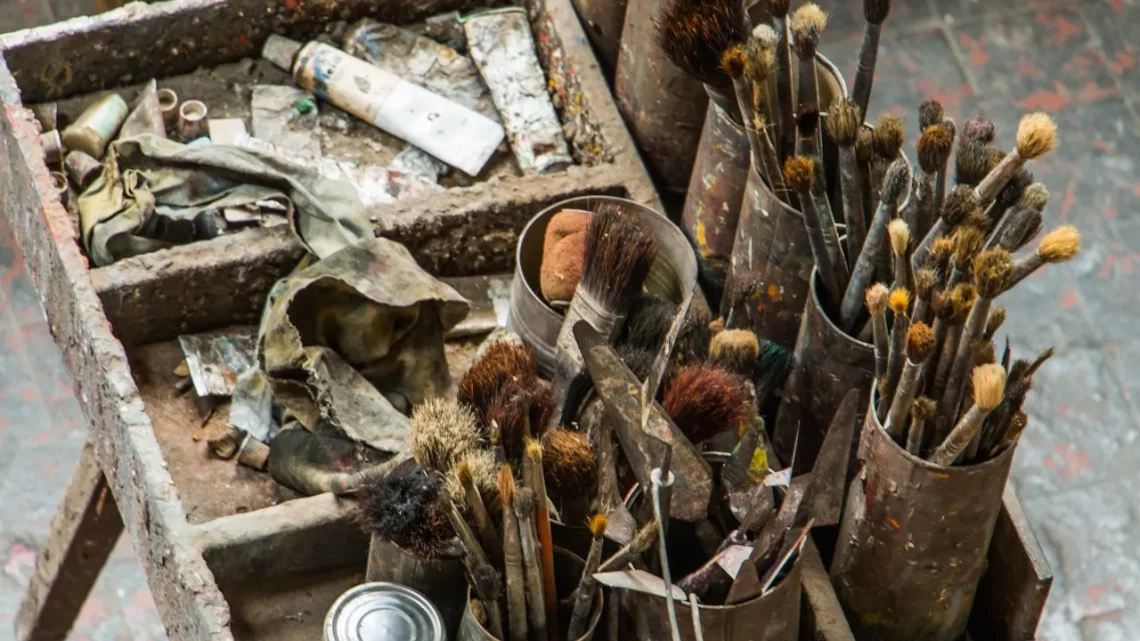
Mastering the Art of Miniature Brushes for Perfect Detailing
Mastering the art of detailing in miniature painting is a skill that many enthusiasts strive to perfect. The precision and nuance required for this intricate form of artistry can transform a simple model into a breathtaking masterpiece. Whether you are painting miniatures for tabletop games, display purposes, or personal enjoyment, the right tools and techniques can make all the difference. Among these tools, miniature brushes play a pivotal role. Their unique sizes and shapes allow for detailed work that larger brushes simply cannot achieve.
Understanding the importance of brush selection, maintenance, and technique can elevate your painting experience and outcomes. The world of miniature painting is both challenging and rewarding, offering a creative outlet that allows individuals to express their artistic vision. As you delve deeper into this craft, you’ll discover that mastering miniature brushes is not just about the physical tools, but also about developing the patience and skill required for fine detailing. This journey will not only enhance your miniature painting abilities but will also deepen your appreciation for the artistry involved in this captivating hobby.
Choosing the Right Miniature Brushes for Your Projects
Selecting the right miniature brushes is crucial for achieving precision in your work. Miniature brushes come in various shapes and sizes, each designed for specific tasks. The most common types include round, flat, and detail brushes. Round brushes are versatile and can be used for both broad strokes and fine details, making them a staple for many painters. Flat brushes, on the other hand, are excellent for covering larger areas with smooth, even strokes. They can also create sharp lines and edges when used correctly.
When it comes to detail brushes, these are where the magic happens. Detail brushes have very fine tips that allow for intricate work, such as painting facial features or tiny insignias. The size of the brush is measured by its diameter; smaller numbers indicate smaller brushes. A size 10/0 brush is extremely fine, while a size 0 brush is still quite small, allowing for various levels of detail.
Material matters too. Synthetic brushes are often more affordable and durable, while natural hair brushes, particularly those made from sable or kolinsky, offer superior paint retention and smooth application. However, natural brushes require more careful maintenance to keep them in good condition. It’s also important to consider the type of paint you’re using; some paints work better with certain brush materials, so always test before committing to a large project.
In addition to size and material, consider the handle of the brush. Longer handles provide more control for detailed work, while shorter handles can be easier to maneuver in close quarters. Ultimately, the right brush for you will depend on your specific needs, painting style, and personal preference.
Brush Techniques for Perfect Detailing
Once you’ve chosen the right brushes, mastering painting techniques is the next step. The way you hold your brush and the strokes you use can significantly impact the final outcome of your work. A common technique for detailing is the “tip of the brush” method, where you use only the very tip of the brush to apply paint. This technique allows for maximum control, especially when working on small areas.
Another useful method is called “layering.” This involves applying thin coats of paint in layers rather than one thick coat. Layering allows for greater depth and richness of color and helps to avoid obscuring fine details. Begin with a base coat, let it dry, and then apply additional layers, gradually building up the color. This technique is particularly effective when working with transparent or semi-transparent paints.
It’s also essential to practice proper brush control. Try to keep your hand steady and use your wrist rather than your fingers to move the brush. This will help maintain a consistent stroke and reduce the risk of unintentional slips. Additionally, using a palette to mix your paints can help you achieve the desired consistency and color, making it easier to apply smoothly to your miniatures.
Don’t forget to clean your brushes regularly. Paint can dry in the bristles and ruin your brushes. After each painting session, rinse your brushes in water and use a gentle soap to clean them thoroughly. Store them upright or flat, with the bristles protected, to maintain their shape. Good brush maintenance is key to ensuring your tools last longer and perform better.
Maintaining Your Miniature Brushes for Longevity
Proper maintenance of your miniature brushes is vital for achieving consistent results and prolonging their lifespan. Brush care begins the moment you finish painting. Always clean your brushes immediately after use to prevent paint from drying in the bristles. For water-based paints, rinse the brush under warm water while gently working the bristles with your fingers to remove paint residue. For oil-based paints, use a suitable solvent or brush cleaner.
After rinsing, reshape the bristles to their original form. This step is crucial, especially for detail brushes, as it helps maintain their fine tips. You can use your fingers to gently mold the bristles back into shape or lay them flat to dry. Avoid standing brushes upright in water, as this can cause bristle splaying and damage the ferrule, the metal part that holds the bristles.
Storage is another important aspect of brush maintenance. Store your brushes in a way that protects their bristles from bending or getting damaged. A brush holder or a roll-up case can be a great investment, allowing you to keep your brushes organized and secure. Avoid storing brushes in a drawer where they can get jostled around, leading to damage over time.
Lastly, be mindful of the quality of your brushes. Investing in higher-quality brushes may cost more initially, but they will often perform better and last longer than cheaper alternatives. Quality brushes can make a significant difference in the detailing process, so choose wisely based on your painting needs and budget.
Advanced Techniques for Detailing Miniatures
As you become more confident in your miniature painting skills, exploring advanced techniques can further enhance your detailing work. One such technique is “wet blending.” This involves blending two or more colors together while the paint is still wet on the miniature. It allows for smooth transitions and gradients, adding depth and realism to your work. To effectively wet blend, apply a base color, and while it is still wet, introduce a second color and work them together on the surface.
Another advanced technique is “glazing.” Glazing involves applying a thin, transparent layer of paint over a dried base coat. This can modify the underlying color and create subtle effects without obscuring the details. Glazing is particularly effective for creating shadows and highlights, enriching the overall appearance of your miniatures.
You might also want to practice “chipping.” This weathering technique simulates wear and tear, adding realism to miniatures, especially vehicles. Chipping can be achieved using a small brush or a sponge to apply a lighter color over darker areas, mimicking paint wear.
Finally, consider using a fine-tipped pen or pencil for extreme details, such as adding tiny inscriptions or intricate patterns. These tools can complement your brushes and help you achieve those meticulous touches that bring your miniatures to life.
By mastering these advanced techniques, you can elevate your miniature painting to new heights, creating stunning pieces that showcase your artistic talent and dedication to the craft.
In conclusion, mastering the art of miniature brushes and detailing is not just about the tools at your disposal; it’s about the techniques you employ and the care you take with your materials. By choosing the right brushes, practicing effective techniques, maintaining your tools, and exploring advanced methods, you can enhance your miniature painting experience and produce remarkable works of art. Embrace the journey of learning and experimentation, and watch as your skills flourish.




